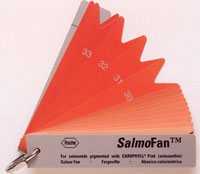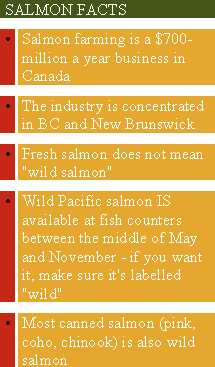|
Writer Alexandra Morton has lived in Echo Bay for the
past 17 years. It's 500 kilometres north of Victoria
and a good base for her study of Orca whales.
It's also where BC's highest concentration of fish
farms now exists — 25 of the province's 100 salmon
farms dot the coast.
The business is worth about $700-million a year.
Most of it is owned by Norwegian and Dutch companies.
"Truth is, I'd never come here now to study whales,
never. It's an industrial zone, although it looks beautiful,"
Morton said.
Morton says the farms are trouble for the area's wild
salmon, which become covered in deadly sea lice
when they swim under the giant pens.
"You could have five fish farms in this area off the
migration routes and they would not be a problem.
But the corporations tell us they can't farm economically
in that manner. They must have ten, fifteen, twenty farms
in one area to make it feasible for them."
Another potential problem is torn net pens, which can
allow hundreds of thousands of Atlantic salmon to escape.
|



